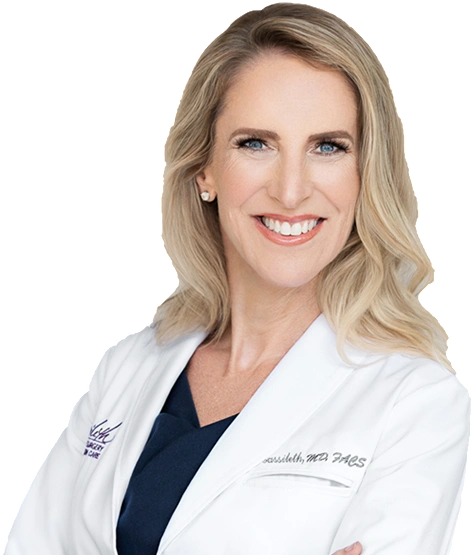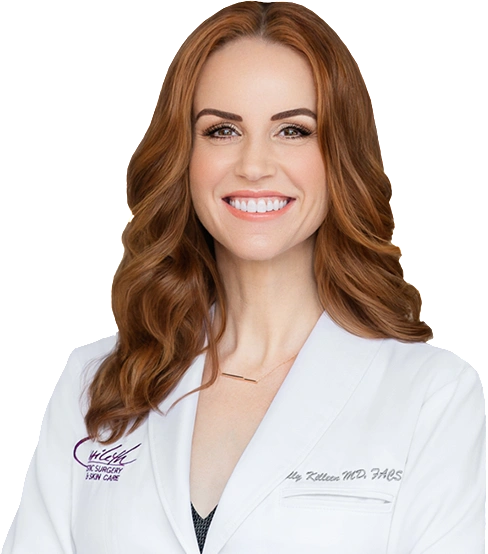
Breast Augmentation
Top Breast Augmentation Surgeons in Beverly Hills
"Breast augmentation is about putting the right volume and shape in the perfect spot."
- Dr. Lisa Cassileth
A breast augmentation is about so much more than just breast size. In planning your augmentation, there are a number of decisions that should be made carefully. These are not just what size you want to be, but also the profile and projection of the implant, the type of implant, and where it is located.
Contact Cassileth Plastic Surgery about capsular contracture in Los Angeles, Beverly Hills, Santa Monica, and beyond.
At Cassileth Plastic Surgery, we listen to you to learn how you want to look. Our goal is to give you the most natural-looking breast augmentation results and ensure that you get the look and feel that you want. Our highly experienced plastic surgeons have specialty training in the most advanced techniques for breast augmentation surgery and we offer a full range of breast implant options. We know that each patient is unique and we never take a cookie cutter approach.
Browse our gallery of plastic surgery results to see the real-life difference our work has made on patients just like you, who came to us for help and care.
Each breast augmentation patient has unique goals and their own personal reasons for seeking breast enhancement. Potential benefits of breast augmentation include:
Board-Certified Beverly Hills Plastic Surgeon, Breast Specialist, and Direct-to-Implant Breast Reconstruction Inventor
Your initial consultation appointment at our Beverly Hills office will help you understand all your options and determine if breast augmentation is right for you. Dr. Cassileth, Dr. Killeen will meet with you to discuss your goals and recommend a treatment plan that can give you the results you want. If you would like to correct breast sagging or drooping or if you have a loss of skin laxity, we may recommend breast lift surgery with implants to increase breast volume while also restoring perkiness. If you are concerned with excess fat around the bra line, we may recommend combining liposuction with your breast augmentation.
Breast augmentation is an outpatient procedure performed with general anesthesia. There are many aspects to breast surgery that will vary patient by patient, which is why it is so important to have a surgeon that you can trust and communicate with. Your breast implant size and shape, as well as the implant placement and incision location will be decided prior to your surgery.
After your surgery, your breasts will be wrapped in dressings. You will spend a short time in our recovery room before a friend or family member takes you home, where you should plan to rest for the remainder of the day. It is normal to experience some pain and swelling in the first few days after surgery.1 We will advise you on pain medication to ease any discomfort, give you detailed post-operative instructions and schedule a follow-up appointment to check your progress.
One very important aspect to getting the best breast augmentation for you is choosing the correct implant size. Breast implant size is primarily a personal decision. There are several important things to remember when choosing an implant size. The size of the implant affects the width of the implant. Larger implants are wider, so if you choose a size wider than your chest can accommodate, your breasts will look unnatural and push out to sides, so that your arms may brush against them. If you want to go larger and you do not have a wide chest, we usually use higher-profile implants, which give you more outward projection with a smaller implant width.
During your breast augmentation consultation we have two major methods of size determination. First, you will have the opportunity to try on breast implants by inserting them into your bra. This will give you an idea of how the various sizes will look and feel.
Next, we will create a three-dimensional representation of your breasts and torso with our Vectra 3D imaging system. Our computer software will project what you will look like with your chosen implants and allows the most accurate selection of your final implant style and size. This is one of the important aspects of your consultation that allows Dr. Killeen, and Dr. Cassileth to deliver reliable and proportionate results.
To make the most of your breast augmentation consultation:
What is inside the breast implants affects the way the implant looks and feels.2 There are three types of material that implants are filled with: saline, standard silicone, and highly cohesive silicone. All are contained within a resilient silicone shell . Saline implants are filled with salt water. There is a newer, non-rippling, bolstered implant style called the IDEAL implant.
The standard silicone is thick, jelly-like in consistency and soft and amorphous in shape. Although loved by many as the softest type of implant, it also tends to show rippling more, which may be an issue for thinner patients without a lot of natural breast tissue coverage over their implant. Highly cohesive silicone is firmer, like a gummy bear in consistency, and holds its shape, hence the name gummy bear implant. It also is least likely to ripple compared to all other implants. All silicone gel implants need to be replaced over time as they can leak. Standard silicone, which is more gel-like, can leak outside the implant. Cohesive silicone, which acts more as a soft, single unit, stays within the lining of the implant. With all the advantages of cohesive implants, we usually use only fully or highly cohesive gel implants.
Cohesive (includes SCL, SCLP, SCM, SCF, and SCX): these are the most cohesive, or “gummy bear” consistency implants. They are slightly firmer and have the least rippling.
Soft-Touch Cohesive implants (includes SSL, SSLP, SSM, SSF, and SSX): these are cohesive implants with slightly less cross-linking than the full cohesive gel so they have a softer feel. They have relatively low rippling.
Responsive Cohesive (includes SRL, SRLP, SRM, SRF, and SRX): these are the least cross linked of the cohesive implants and the softest. They have a tendency to ripple more because of the low cohesivity.
Saline breast implants have some advantages and disadvantages. First, the saline can be filled to an exact size, as opposed to the incremental size jumps in the pre-filled silicone implants. Next, if the saline implant leaks, it simply leaks sterile salt water, similar to an IV rehydration fluid. The main disadvantage to saline is its tendency to ripple, which is an issue for patients that have thin chests, as the natural breast tissue and fat may not provide much coverage over the implant. A newer type of saline implant, the Ideal Implant®, has the safety and adjustability of the saline implant and minimizes rippling. The Ideal Implant has internal bolsters that provide structure for the saline, and give in a more natural look and feel by preventing the "sloshing" of the saline around the implant.
It's important to mention shaped implants as well. Shaped implants are bigger on the bottom and smaller on top, and were an attempt to make the implant look more like a natural breast. The problem with shaped implants is that they are all within textured silicone sheeting, unlike the usual smooth round gel. The texture prevented them from rotating and going sideways or upside down, ruining the whole advantage of the shaped implant. Some textured implants were found to cause a rare localized cancer called Breast Implant Associated ALCL, which did not emerge until after they had been in place for many years, often more than a decade. For that reason, we prefer not to use even shaped implants that are still FDA-approved, as the texture may have negative long term health impact.
Double-Board-Certified Beverly Hills Plastic Surgeon and Breast & Body Specialist
 |
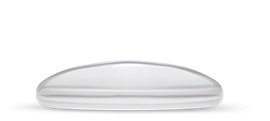 |
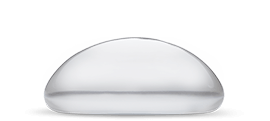
|
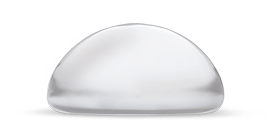 |
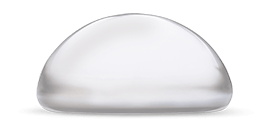
|
| Low | Low Plus | Moderate | Full | Extra Full |
| Typically best for women with broader chests, or those who want a small breast augmentation | Typically best for women needing a bit more projection | Used for most patients; accommodates a standard augmentation size | Best for patients who have a narrow chest, or who want a large breast augmentation | Required for large implants in narrow chests |
Implant placement is essential for a great breast augmentation. Breast implants can be placed in three different layers:
The dual-plane technique is the most common and has well-known benefits. The implant is protected by the muscle, so the top half of the implant is covered by the pectoral muscle. This also protects it from capsular contracture, which is when the scar tissue around the implant feels firm. The primary negative is that the implant is affected by the muscle. In some patients, the implant may bounce slightly or move when the muscle flexes. This is called pectoral animation deformity, or pec flex deformity. The pec muscle can also push the implant down and to the side. True subpectoral implants are rarely performed, since the muscle is slightly too high and the implant is then placed too high on the chest wall.
The submammary or subglandular technique is practically antique, and was performed on the first breast augmentations ever in the 1970's and 1980's. It fell out of favor as it was associated with a high capsular contracture rate, and high visibility of the implants. Now it is still occasionally used for the right patient, especially with specific reconstructive issues and sometimes in combination with mesh or dermal matrix.
The newest technique, subfascial plane, corrects some of the problems with the other techniques. It allows the implant to have coverage from the thin fascia so that the implant is less visible and looks more natural. It prevents pectoral motion deformity as the implant does not move with the muscle. Finally, it has some protection against capsular contracture. This technique may work less well for the largest implant, as the pectoral fascia covers the upper portion of the implant only for larger sizes.
During your consultation, you will be able to see what your breast augmentation results may look like, using our state-of-the art Vectra 3D Imaging System. The Vectra will create a high-resolution 3D model which we can then use to simulate various implant types, sizes, and positions, to help us finalize your decisions with you.
Inframammary Incision: This is the incision we use most often, as it has been proven to deliver the safest and most favorable results.3 This incision is placed in the natural breast fold, where the bottom of the breast meets the chest.
Periareolar Incision: This U-shaped incision is placed on the bottom edge of the areola and can generally only be used for smaller implants.
Transaxillary Incision: This type of incision, which is made in the armpit, is not commonly used, as it is not appropriate for many patients and can contribute to post-surgical complications.
Breast implant illness is an ill-defined disease, and has become a catch-all term for any type of systemic illness associated with breast implants. Bii has a wide range of possible symptoms, like tiredness, joint aches, brain fog, rashes, food intolerances, and autoimmune symptoms, to name a few. There are many theories as to why breast implants may sometimes cause illness, but good surgical management of implants and implant placement can prevent most problems.
Non-cohesive, silicone breast implants may leak and patients may have free liquid silicone gel. The silicone gel can act as an irritant and stimulate the immune system, and should be removed. For silicone gel spillage, definitive removal of all of the accessible local gel is required. Sometimes, trace amounts of silicone travel to the lymph nodes, which must be left intact. Because of the risk of leakage, we recommend you use cohesive silicone or saline implants.
For all implants, we need to address biofilms. Biofilms are non-infectious bacteria that can sit on the surface of any foreign body. They can populate facial fillers, dental implants, catheters, and pacemakers. And of course, this includes breast implants. Therefore, when using internal devices, special precautions should be taken to avoid biofilm contaminants. Most importantly, the device should never touch anything that could transmit a biofilm. This includes even your own skin, pores, hair, sweat glands, and breast ducts. A protective funnel should always be used when placing the implant, which shields it from contact. The inferior mammary crease incision is preferred, as it provides the least risk of contamination. Before placing the implant, the surgical pocket is bathed with antibiotic solution. Finally, a topical antibacterial hypochlorous solution is infused around the implant after it has been placed, as a final preventative measure. Immaculate closure helps to prevent topical infections which may communicate with the implant space. Biofilm prevention is critical as it does appear that some biofilms cause unnecessary inflammation and may be one of the underlying causes of Bii.
The FDA reported in March, 2017, that a very rare form of cancer, ALCL (anaplastic large cell lymphoma) has been linked to breast implants. ALCL most often occurs with textured implants.
The risk of getting this form of breast implant associated lymphoma is extremely low (occurring between 1 in 2,207 and 1 in 86,029 women undergoing breast implant procedures) 4. ALCL is treated by removal of the capsule (the membrane surrounding the implant). We do not recommend textured implants for augmentation.
Breast cancer, a relatively common form of cancer for women, has not been linked to breast implants 5. Women with breast implants are not more likely to have cancer, and there is not a delay in diagnosis because of interference with mammogram or ultrasound.
Any surgical procedure carries some risk, but you can reduce the chance of complications by working with a highly qualified surgeon and choosing the best implants for your needs and goals.6 While rare, possible complications include infection, bleeding, or implant rupture. Your surgeon will review all potential risks and benefits with you during your consultation appointment.
Your scarring will depend on your incision placement as well as factors such as your skin type, genetics, and skin care routine. Our surgeons use advanced techniques when placing sutures to minimize visible scarring.
Breast implants are the most effective method for breast enlargement. However, natural breast augmentation with fat transfer is an option for patients seeking subtle breast enhancement without implants.
Breast augmentation for cosmetic purposes is not covered, as health insurance does not cover cosmetic surgery. Some insurance plans may offer some coverage for certain types of reconstructive surgery. We do offer financing options for breast augmentation surgery.
Many women who wish to breastfeed after breast augmentation are able to do so. Studies have found that women who had the ability to breastfeed before surgery are able to safely breastfeed with breast implants. 7
1 American Society of Plastic Surgeons. Breast Augmentation. Available: https://www.plasticsurgery.org/cosmetic-procedures/breast-augmentation/recovery Accessed April 19, 2021
2 Mayo Clinic. Breast Augmentation. Available: https://www.mayoclinic.org/tests-procedures/breast-augmentation/about/pac-20393178. Accessed 2/15/2021.
3 Swanson E. The Supra-Inframammary Fold Approach to Breast Augmentation: Avoiding a Double Bubble. Plast Reconstr Surg Glob Open. 2017 Jul; 5(7): e1411. Published online 2017 Jul 5. doi: 10.1097/GOX.0000000000001411.
4 American Society of Plastic Surgeons. Breast Implant Associated Anaplastic Large Cell Lymphoma (BIA-ALCL). Available: https://www.plasticsurgery.org/patient-safety/breast-implant-safety/bia-alcl-summary. Accessed 2/15/2021
5 Hoshaw SJ, Klein PJ, Clark BD, Cook RR, Perkins LL. Breast implants and cancer: causation, delayed detection, and survival. Plast Reconstr Surg. 107(6):1393-407, 2001.
6 Nava MB, Rancati A, Angrigiani C, Catanuto G, Rocco N. How to prevent complications in breast augmentation. Gland Surg. 2017;6(2):210-217. doi:10.21037/gs.2017.04.02
7 Schiff, M, et al. The impact of cosmetic breast implants on breastfeeding: a systematic review and meta-analysis. International Breastfeeding Journal 2014; 9: 17.10.1186/1746-4358-9-17

Dr. Kelly Killeen is not just an outstanding surgeon and artist, she is also an angel. I had 15+ surgeries to correct an ongoing problem for last 10 years, numerous super-famous doctors worked on me, in different parts of the world, including Geneva, Berlin, etc.. So by the time I got into Dr. Kelly's hands the words "total mess" don't even begin to describe the actual condition of what used to be my breasts. Dr. Killeen, just as regular angel performed a miracle and made everything good again. I love you. There is also nurse Dee who is just incredible human being, here level of compassion, love and care is truly rare. Last but not the list there is a Brit called Jade - she is so beautiful, funny and totally awesome, I will find a reason to come again for some facial peeling or something else simple just to see you guys! I am so blessed to have met these beautiful people, they maybe just part of exceptional medical team, but in my heart they will always be my friends...
Arrange a consultation for capsular contracture treatment at Beverly Hills' Cassileth Plastic Surgery. Women from Santa Monica, the entire Los Angeles area, and beyond can Send a message online or call (310) -278-8200.
Connect with us on social media! We pride ourselves on building real relationships with our patients near and far.
